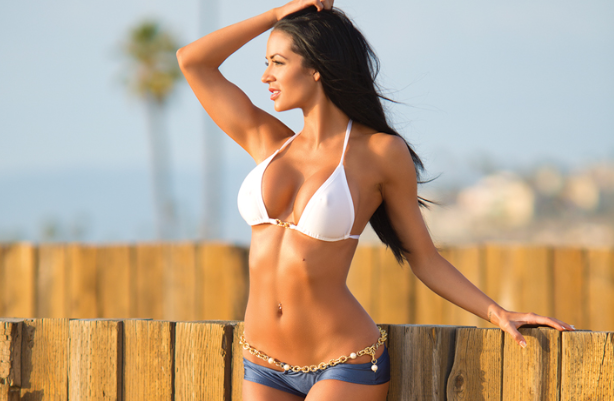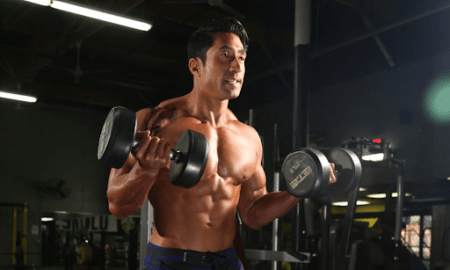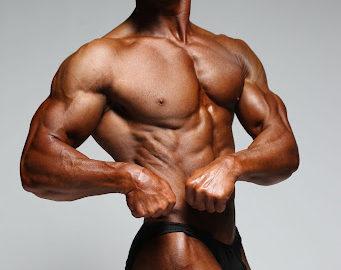Q: I’m 48 years old, and I’ve been training with weights for decades. I’ve always had trouble building my triceps. Almost every exercise that I do to directly work them hurts my elbows. Do you have any advice?
A: First, don’t do the exercises that hurt. Even if you’re down to one exercise that directly hits the triceps, do that one only. Each of us has a unique musculoskeletal system. I’ve trained thousands of clients over the years, and none respond to the same set or exercise in exactly the same way. I will give you an example.
Many years ago I often trained with a very good bodybuilder who had “bad elbows.” When he worked his chest and triceps, he did the same routines each time—very heavy too. He’d do enormously heavy flat-bench presses—315 for eight reps and bounce 405 off his chest for two with a barbell. Then he’d do very heavy incline presses with a barbell—still keeping the weight too high and struggling to get two or three reps. His finishing exercise was flat flyes with the 100s, and most of that motion was pressing. Come time for his triceps, he’d load the cambered bar up for French presses, or, as some people call them, lying triceps presses. Every rep he did was torture. He looked around at other huge guys and saw them doing the same exercises without any problem. He concluded that they, too, were going through all this torture to get their chest and triceps huge or that something was wrong with him. He figured he had to go through the pain in order to look like them.
Not so! There shouldn’t be pain in bodybuilding. You may feel burning in the tissue or get out of breath from some heavy squats, but being in pain is a really bad place to be.
The guy I trained with would get cortisone shots and ice the heck out of each elbow just to move from day to day, and he lived in constant pain. I watched it close up. I asked him why he didn’t use dumbbells, cables or machines for chest and triceps, use less weight and do more reps. His response: “You can’t grow like that!” So I started to train on my own again.
My point is that you can grow by lifting logs if you’re isolating the muscles properly. Take the problem with your elbows. Many ligaments and tendons move right near the elbow; however, it’s been my observation that it’s usually one of three—or all three—that causes problems. Often it’s a tendon that is snapping over the elbow, but that usually doesn’t cause long-term and severe pain. Torn ligaments, however, can.
In the elbow, the ulnar collateral ligament tenses and relaxes with muscular response to the inner part of the forearm. The radial collateral ligament tenses and relaxes in response to use of the backside of the forearm—that’s also where most people get tendinitis, or what’s often called tennis elbow. You could have that problem, so go to a physiatrist—an allopathic M.D.—who knows the biomechanical body better than any other type of doctor. Also in the elbow is the articular capsule. That’s where synovial fluid is released in order to keep parts working—like oil in your automobile’s engine. That capsule, or sac, can become inflamed and stop producing the synovial fluid that is vital for movement of the elbow joint.
Let’s say that no one can pinpoint anything and you have to figure it out on your own. Here’s what I’d tell anyone with your problem: Warm up your elbows with the lightest of weights—really light pushdowns with 20 to 30 pounds, two sets of 20 reps. You’re not going to blow your entire workout, as my friend might say. Continue doing pushdowns, trying different bars or a rope, and see which one changes the way your wrist moves enough to keep your elbow from being injured. The position that you hold the bar in and how your wrist is aligned with the ulna and humerus greatly affects how your elbow works. That may seem like a painstaking process, but it’s the only way you’ll ever find out which exercises are biomechanically right for you.
It may take weeks or months, since you’ve probably created multiple problems. Do two heavy sets with a weight that gives you 10 perfect reps on pushdowns with a straight bar, and then rest your triceps for four days. Come back, warm them up again and use a V-shaped bar. That changes not only your wrist placement but also the emphasis on the muscles and tendons. Do two sets, and then rest your elbows for four more days. Then try a rope. Repeat until you solve the puzzle. Not everyone’s body is biomechanically designed to lift weights the way others do.
I have three friends who have what is called ankylosing spondylitis arthritis. They’re relatively certain they got it from going too heavy while using anabolic steroids. Often it’s not the steroids that cause the problem; it’s people who don’t work within their biomechanical structure and its limits.
Editor’s note: Contact Paul Burke via e-mail at [email protected]. Burke has a master’s degree in integrated studies from Cambridge College in Cambridge, Massachusetts. He’s been a champion bodybuilder and arm wrestler, and he’s considered a leader in the field of over-40 fitness training. You can purchase his book, Burke’s Law—a New Fitness Paradigm for the Mature Male, from Home Gym Warehouse. Call (800) 447-0008, or visit www.Home-Gym.com. His “Burke’s Law” training DVD is also available.





















You must be logged in to post a comment Login